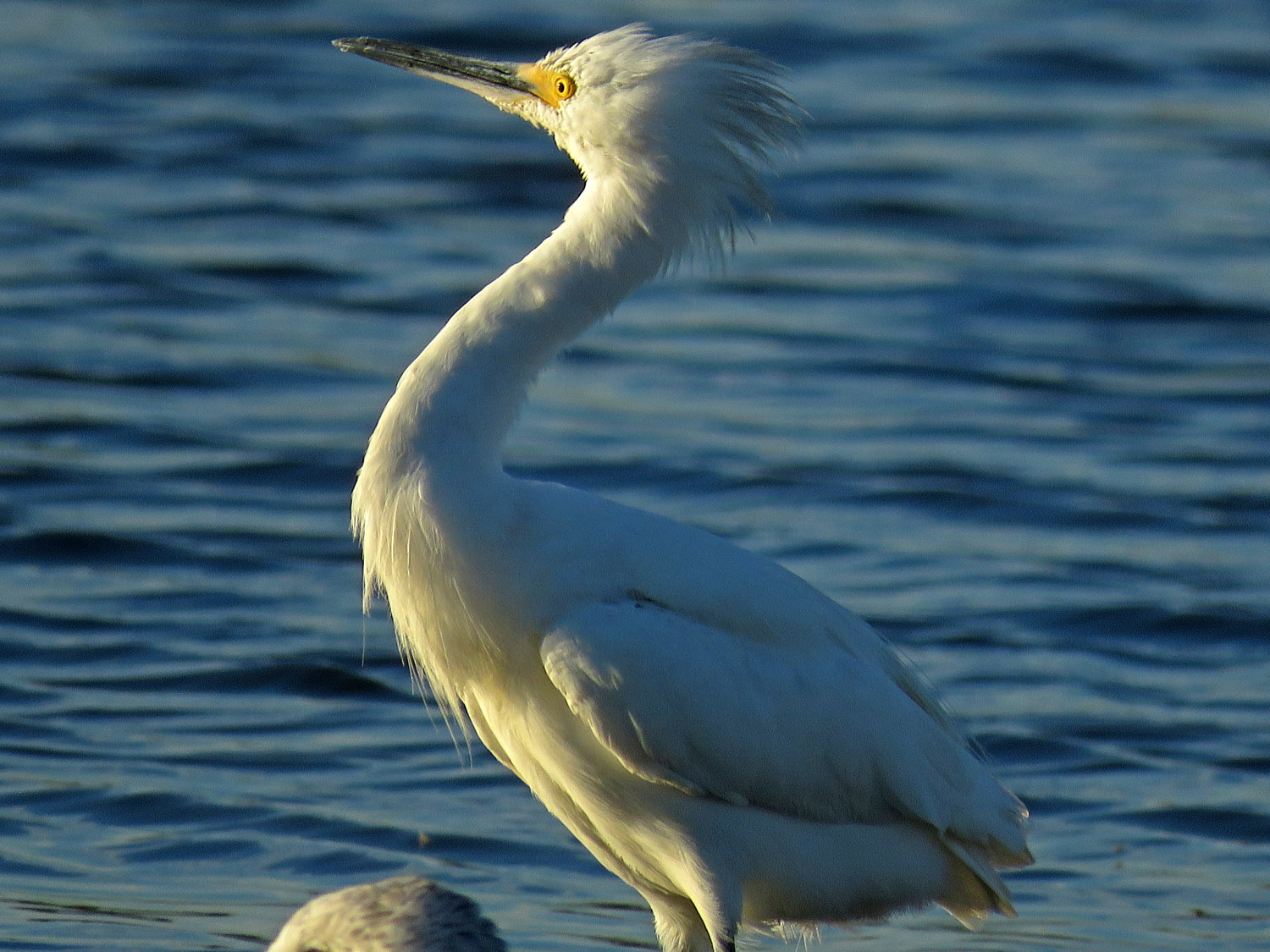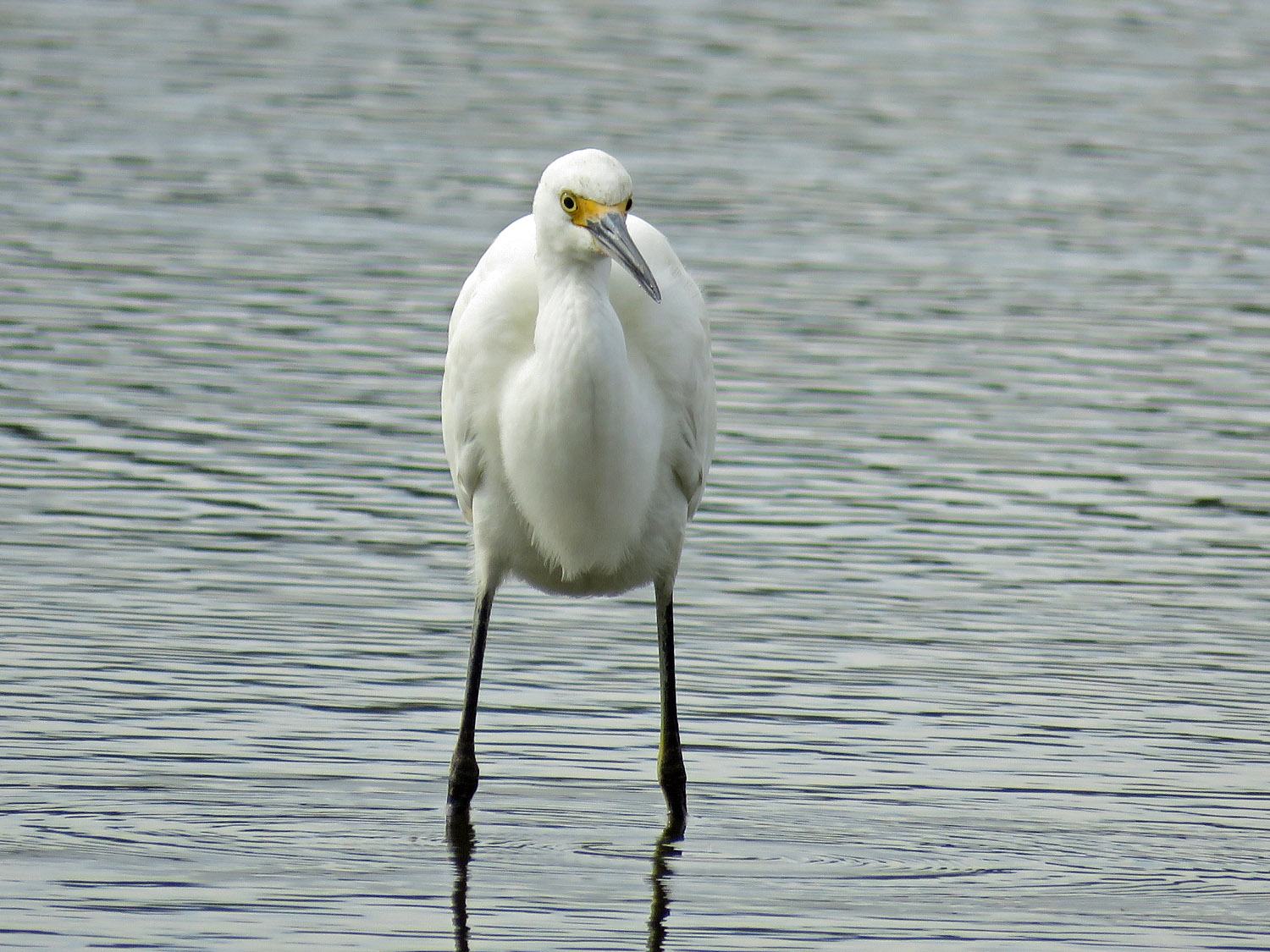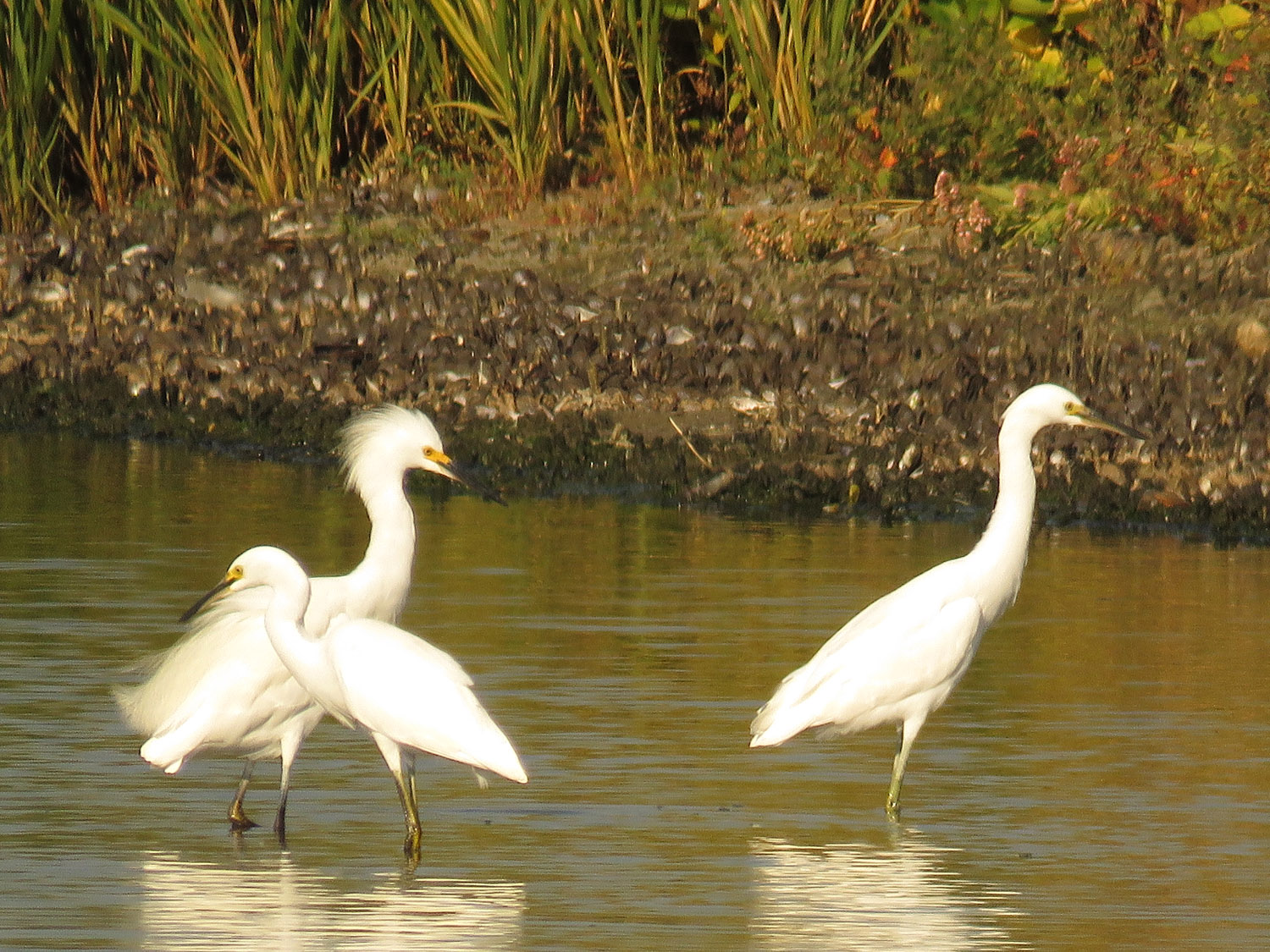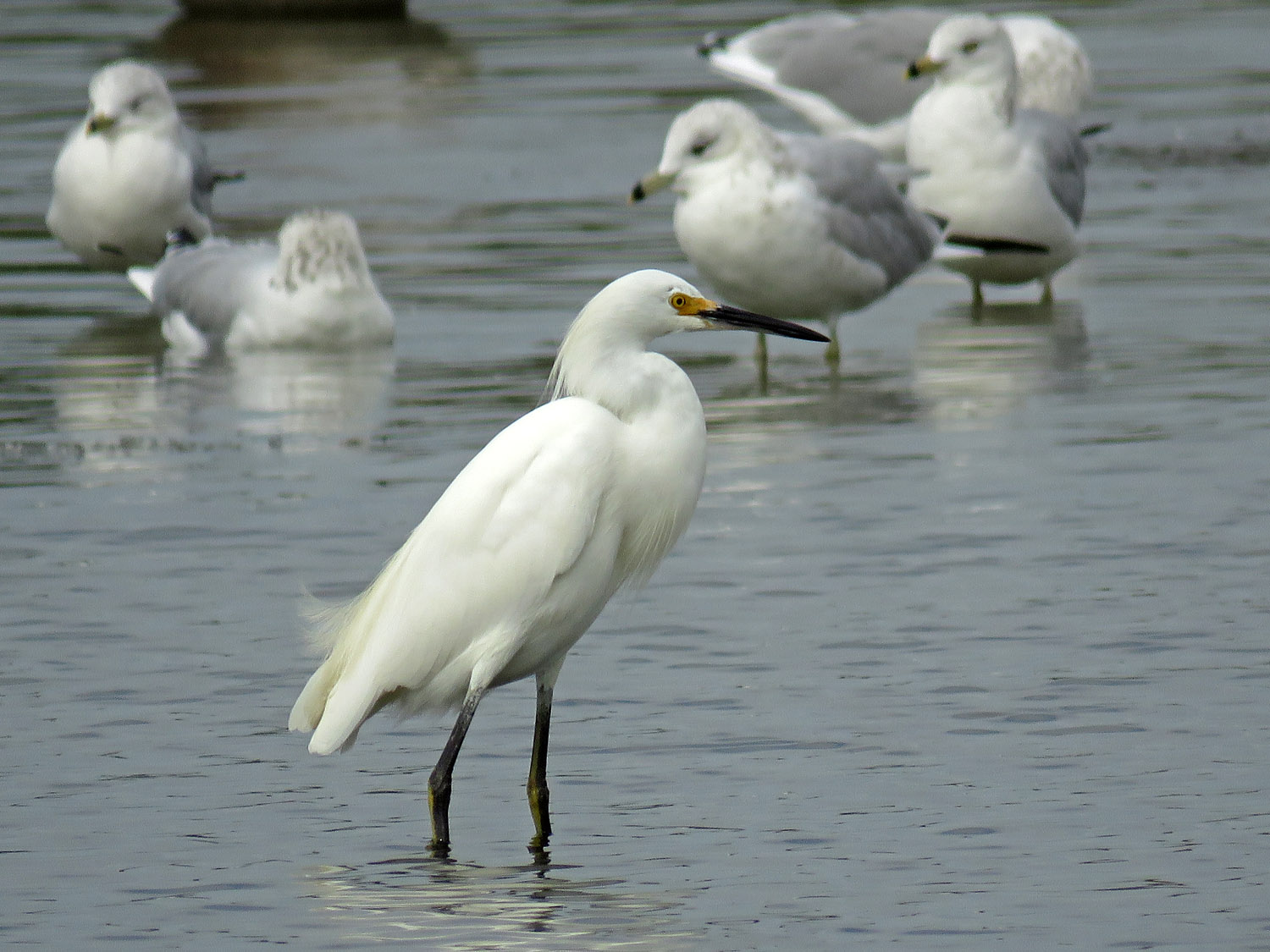An American white pelican (Pelecanus erythrorhynchos) visited the East Pond of the Jamaica Bay Wildlife Refuge in late summer/early autumn of 2024. This bird was out of its normal range (in breeding and migration seasons, the range is mostly west of the Mississippi), but seemed very content hanging out with the double-crested cormorants and mute swans.
American white pelican, Jamaica Bay Wildlife Refuge, September 25, 2024
American white pelican, Jamaica Bay Wildlife Refuge, September 23, 2024
When I look at some of the photos of the pelican, I get the feeling I’m looking at a picture that might have been painted by Henri Rousseau. I keep expecting a lion to peek through the phragmites.
White pelicans eat fish, and apparently the East Pond had sufficient fish to please this pelican and his cormorant and swan cronies. Cormorants and pelicans often forage for food together, even though they usually do not eat the same fish. As you will see in the photos below, the cormorants often stood on the same shore as this white pelican, along with the great and snowy egrets and gulls.
American white pelican with cormorant buddies, plus some ducks, September 17, 2024
The videos, filmed over several days in September and then on October 28, are set to music by Scott Joplin. I condensed the longer version into a short version, both of which you can watch below.
Below are some more of my favorite photos from my eight days taking pictures of this bird. You can find even more photos on my American white pelican page.
White pelican, September 23, 2024


























